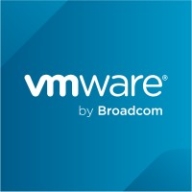

Both VMware Aria Operations and VMware Tanzu Platform excel in cloud management and infrastructure, with Aria Operations having an advantage in infrastructure management and Tanzu leading in Kubernetes and microservices support.
Features: VMware Aria Operations offers features like virtual machine monitoring, predictive analytics, and capacity planning, with excellent integration into VMware’s suite, enhancing operational efficiency. VMware Tanzu Platform provides exceptional Kubernetes management, integration, and application lifecycle management across multi-cloud environments.
Room for Improvement: VMware Aria Operations users suggest enhancements in reporting, third-party integration, dashboard streamlining, and user-friendliness. VMware Tanzu Platform could improve its user interface, provide more detailed application tracing, and offer better customization options to increase usability for cloud-native workloads.
Ease of Deployment and Customer Service: VMware Aria Operations supports versatile deployment across on-premises, hybrid, private, and public clouds, demonstrating flexibility. Tanzu Platform also supports varied deployment models, especially for hybrid and public clouds. Both offer robust customer service backed by VMware, though recent changes may impact experiences.
Pricing and ROI: VMware Aria Operations involves a straightforward licensing model, often bundled with other VMware services, offering good ROI through efficiency, though potentially costly for smaller enterprises. VMware Tanzu Platform, considered more expensive, is suited for medium to large enterprises, providing value for containerized application deployment and management.
| Product | Market Share (%) |
|---|---|
| VMware Aria Operations | 6.7% |
| VMware Tanzu Platform | 1.1% |
| Other | 92.2% |


| Company Size | Count |
|---|---|
| Small Business | 62 |
| Midsize Enterprise | 62 |
| Large Enterprise | 278 |
| Company Size | Count |
|---|---|
| Small Business | 10 |
| Midsize Enterprise | 3 |
| Large Enterprise | 9 |
VMware Aria Operations is a high-ranking virtualization management and cloud management tool that automates and simplifies IT management to the applications it supports. It achieves this through full-stack visibility from physical, virtual, and cloud infrastructure. The product allows users to enable self-driving IT operations management across private, hybrid, and multi-cloud environments. This is conducted with the unified operations platform that delivers continuous performance, capacity and cost optimization, and integrated compliance through artificial intelligence (AI) and machine learning (ML), and predictive analytics.
VMware Aria Operations Use Cases
VMware Aria Operations has several use cases, some of which include:
VMware Aria Operations Features
The product has various features which users can utilize. Several of the features that the 2022 version of VMware Aria Operations introduced include:
VMware Aria Operations Benefits
VMware Aria Operations brings various benefits to the organizations using it. Among them are the following:
Reviews from Real Users
Mohamed N., a tech lead VMware support engineer at a tech services company, appreciates VMware Aria Operations because it is easy to use, stable, and support is always available.
Mojtaba K., a senior system administrator at a comms service provider, values VMware Aria Operations due to the fact that its dashboards give you a glimpse of what is really going on in your virtualized environment.
VMware Tanzu Platform is designed for cloud-native development and management of Kubernetes, CI/CD processes, microservices, and containerized workloads. It supports deployments both on cloud and on-premises, providing centralized management via Mission Control.
VMware Tanzu Platform offers seamless integration with vSphere, ESX, and vSAN, supporting centralized cluster management and lifecycle management. The platform provides a GUI for monitoring CI/CD pipelines and network policies, enhancing multi-tenancy and Day 2 operations. Users can easily manage Kubernetes clusters, monitor applications, and integrate with tools such as GitHub, GitLab, Cloud Foundry, and Azure. It ensures compliance and security for service providers, financial institutions, and businesses.
What are the key features of VMware Tanzu Platform?
What benefits and ROI should users look for in VMware Tanzu Platform reviews?
Industries such as financial institutions, service providers, and businesses requiring rigorous compliance and security deploy VMware Tanzu Platform. These entities benefit from centralized management, streamlined DevOps processes, and integrated tools, enhancing their capabilities in cloud-native developments and containerized workloads.
We monitor all Cloud Management reviews to prevent fraudulent reviews and keep review quality high. We do not post reviews by company employees or direct competitors. We validate each review for authenticity via cross-reference with LinkedIn, and personal follow-up with the reviewer when necessary.